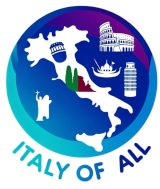The province of South Sardinia, one of the newest provinces in Italy, was established in 2016 from parts of the former provinces of Carbonia-Iglesias and Medio Campidano, along with parts of Cagliari. It encompasses a vast and diverse area characterized by its rich historical tapestry, stunning natural beauty, and a strong cultural identity.
Geographically, South Sardinia offers a varied landscape that includes the rugged mountains of the Iglesiente and the Sulcis areas, extensive forests, and some of the island’s most beautiful and unspoiled beaches, such as those in Chia and Porto Pino. The region is also noted for its important wetlands, which are crucial habitats for birdlife, including the flamingos that famously populate parts of the region.
Historically, this area is steeped in a rich and complex history, from ancient Nuragic civilization through Phoenician, Roman, and later Pisan and Spanish rule. Each culture has left its mark, contributing to the rich archaeological heritage found throughout the province, including numerous Nuragic complexes, Punic cities, and Roman ruins. The area’s mining history, particularly around Iglesias and Carbonia, is another significant aspect of its historical landscape.
Culturally, South Sardinia is deeply traditional, maintaining strong ties to the island’s pastoral and agricultural roots. Festivals and events celebrating local customs, crafts, and music are common, with the horseback procession known as the “Cavalcata Sarda” being one of the most spectacular. The province is also a stronghold of the Sardinian language, which is widely spoken and cherished as a key element of local identity.
Cuisine in South Sardinia mirrors the island’s overall culinary traditions but with unique local twists. The diet is heavily based on pastoral products, with sheep’s cheese such as Pecorino Sardo being a staple. Traditional dishes include “malloreddus” (a type of gnocchi served with tomato sauce and sausage), “su porceddu” (roasted suckling pig), and an array of seafood dishes reflecting the region’s coastal location.
Economically, South Sardinia’s economy has traditionally been based on agriculture, pastoralism, and mining, although mining has declined significantly in recent decades. Today, tourism is becoming increasingly important, with the region’s beautiful landscapes, archaeological sites, and pristine beaches drawing visitors from Italy and abroad. Efforts to develop sustainable tourism that respects the natural environment and promotes local culture are key to the region’s economic strategy.
Despite challenges such as economic diversification and mitigating the impacts of seasonality in tourism, South Sardinia is actively working towards leveraging its natural and cultural assets to foster a sustainable and resilient economy.
Overall, the province of South Sardinia offers a unique blend of natural beauty, historical richness, and cultural vibrancy. Its commitment to preserving its heritage while promoting sustainable development ensures its continued significance as a distinctive and valuable region within Sardinia and Italy.
Comuni in South Sardinia Province:
- Arbus
- Barumini
- Barrali
- Carloforte
- Calasetta
- Castiadas
- Escolca
- Domus de Maria
- Collinas
- ** Gonnosfanadiga
- Gesturi
- Guspini
- Furtei
- Guasila
- Lunamatrona
- Isili
- Las Plassas
- Masainas
- Gergei
- Narcao
- Pauli Arbarei
- Orroli
- Pabillonis
- Perdasdefogu
- Nurallao
- Ortueri
- Nuragus
- Nuxis
- Nurri
- Samassi
- San Basilio
- SelciSelegas
- Segariu
- Senorbì
- Santadi
- Sant’Andrea Frius
- Serrenti (SA)
- San Gavino Monreale
- Sanluri
- Serramanna
- Sardara
- Sant’Antioco
- Siurgus Donigala
- Sant’Anna Arresi
- Serri
- San Nicolò Gerrei
- Ussaramanna
- Tuili
- Villacidro
- Turri
- Ussana
- Villanovafranca
